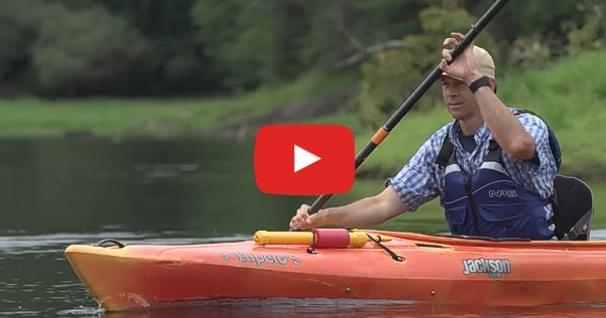Kayak Low Brace Stroke
One of our all-time favorite strokes is the anti-capsize stroke (pretty important!); a stroke and a maneuver that will stop you from capsizing or falling over in your kayak.
What is the low brace
The low brace works by getting the back face of the paddle against the surface of the water to stop your fall, and then your lower body rotates the kayak back under you. Elbows are up, knuckles are down. As the boat falls over, catch, rotate the kayak back up. Your head should go towards the side that is coming up.
How the low brace works
The low brace is a defensive stroke to help you avoid capsize. I want you to make note that between the low brace and the high brace, the low brace is the safest one in terms of protecting your shoulders. You're going to set yourself up with your knuckles down, elbows up, so the paddle shaft is in front of you, close to your body, and across the cockpit combing. You are using the back face of the paddle to affect the brace with the paddle held low and your elbows up. As the wave comes toward you, you're going to be tilting the kayak towards the wave, and you may actually raise that bracing blade slightly. You'll keep the other hand, which is the non-water hand, as close as you can to your cockpit combing so that the paddle shaft is as horizontal as possible at the time that you affect the brace and that back face of the paddle hits the water.

When the back face of the paddle hits the water, that's going to stop your kayak from capsizing. You're at that point in time; the wave's going to run under the boat. You're going to need to now to hip snap to pull the boat back upright again. You're going to push down with your left side and lift up with your right side in the case of this right side brace, to get the kayak back upright again and under you.
This has been Mike Aronoff with Canoe Kayak and Paddle Company (CKAPCO). I hope we'll be seeing you on the water.
View Different Types of Paddles
Related Articles
Even though they are flipping over, missing their gates and failing their maneuvers, they still look…
In this video, we're going to look at five kayaking tips that will help make you a better paddler, or…
Tandem kayaks, or doubles, are a great way for two people to get on the water together and a fantastic…
For obvious reasons, the forward stroke is the most important stroke to learn. But you don't need to…







